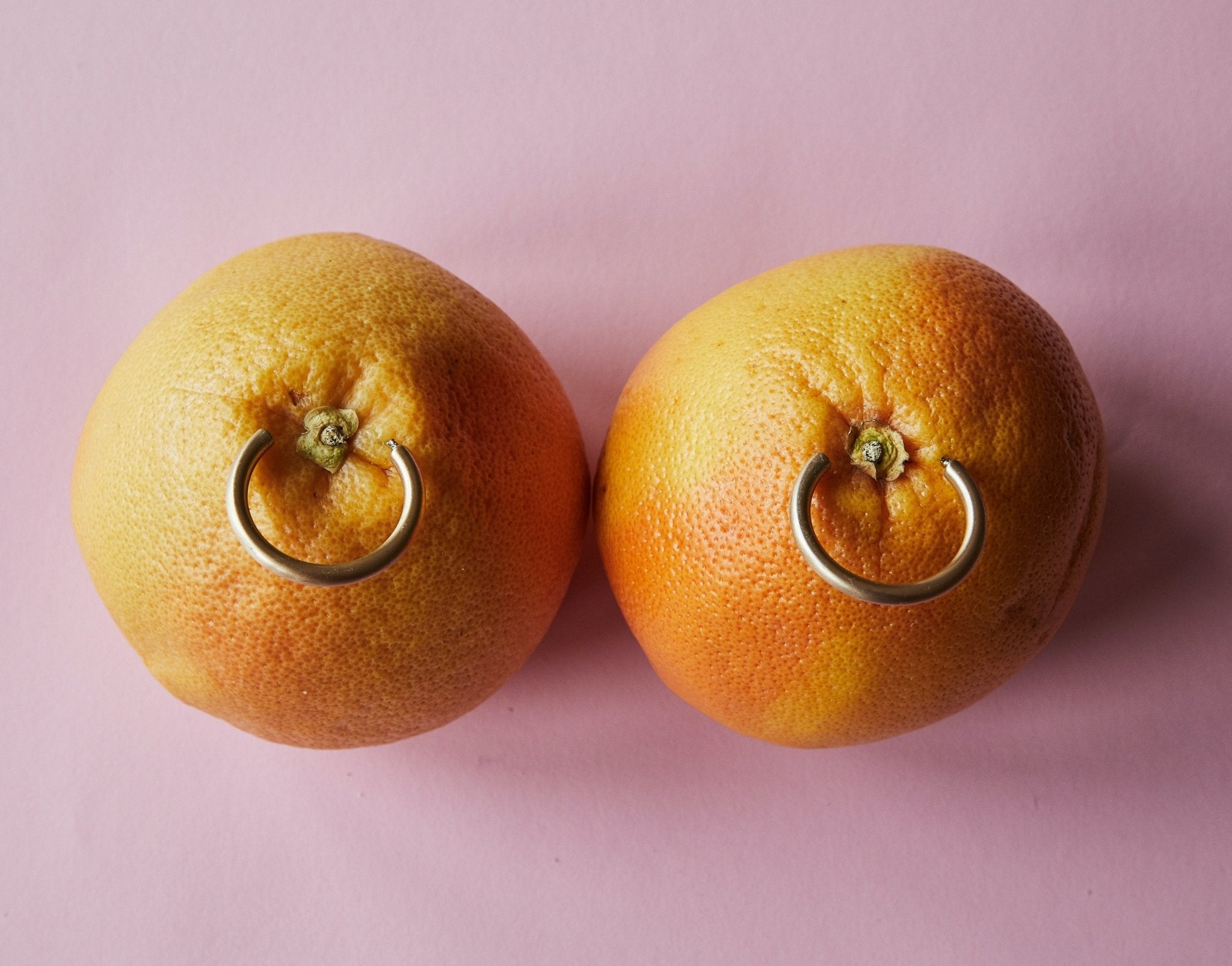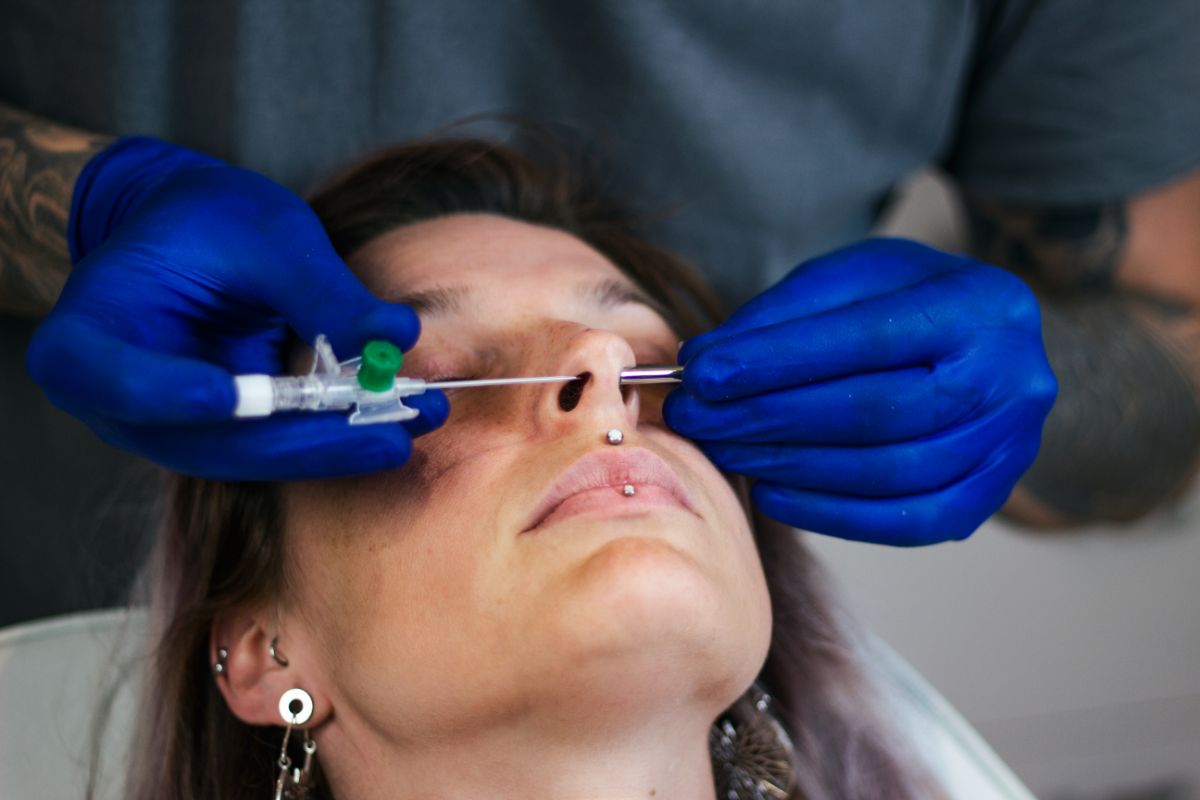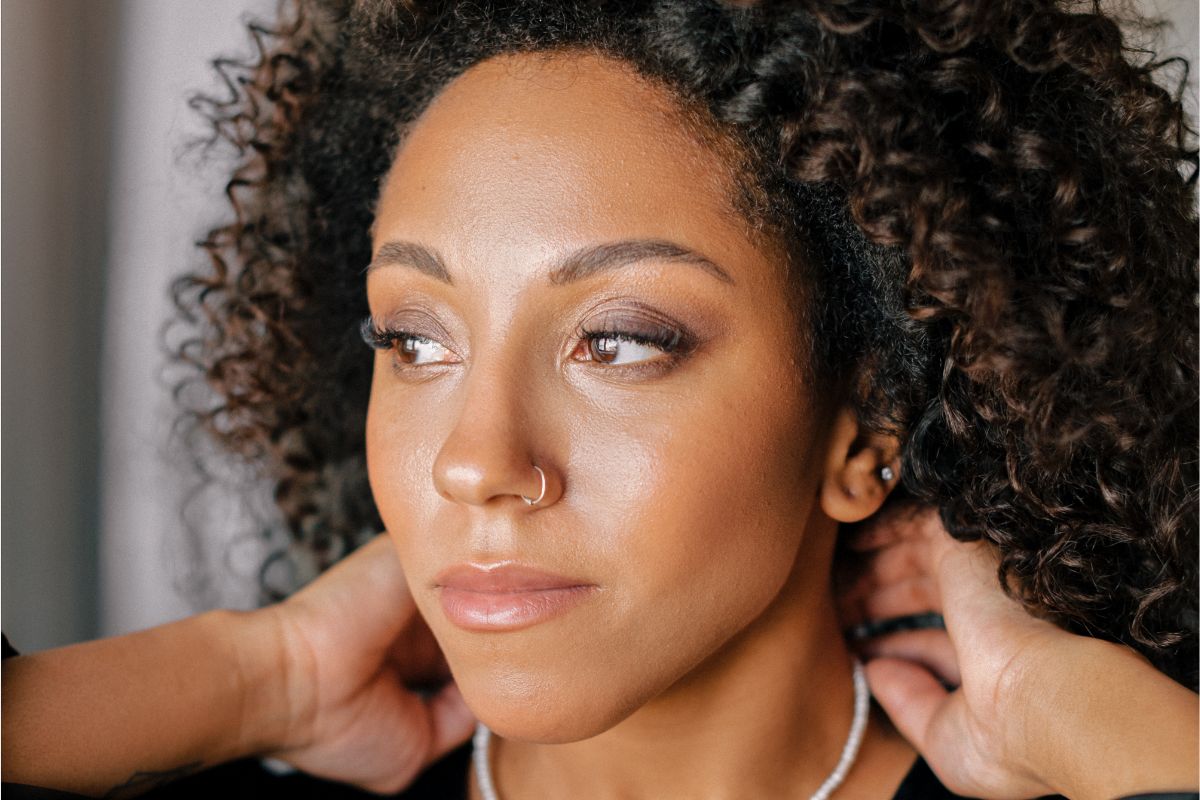Have you ever been mesmerized by a piercing on someone's cheekbone or another unique spot, like the nape of the neck? If so, you've probably wondered how the piercer created that magical effect.
Piercings like these are called dermal piercings. These piercings don't have separate entry and exit points and are placed directly under the skin. A dermal piercing is any single-point piercing into the dermis or middle layer of the skin.
They're frequently seen on the chest or abdomen or at points on the face, such as the cheeks, chin, or nose. You may also see them on the thighs or between the collarbones, as shown in the photo below.

Keep reading if you're considering getting a dermal piercing and want to learn more.
The 3 Main Types of Dermal Piercings
Generally, dermal piercing has three options: the anchor, the top, and the diver.
The anchor, done with a needle, is considered a traditional dermal piercing. With an anchor piercing, the anchor goes under the skin.
The anchor may either be round or footed. As its name implies, a round anchor is a small flat disc, while the footed anchor has an elongated base. Between the two, the foot is inserted deeper.
Do you think about a top piercing? If you're choosing between a top and an anchor, the only difference is that once the anchor is in, you can accent it with a small gem or other jewelry.
The third option is the diver. Unlike the previous two, piercings for divers are done using a dermal punch. Divers have pointed bases and are already topped with jewelry. They are also fixed and cannot be changed.
What Can Materials Be Used For Jewelry?
The piercer may present you with a few metal options to ensure safety once you get a dermal piercing. Of course, it's best to talk to your piercer about their choices, but here's a rundown of the metals that will probably be recommended based on your needs.
The first is titanium or anodized titanium, which is recommended for sensitive skin because this material is less likely to irritate. The second is stainless steel. It is also a hypoallergenic choice, but make sure you get surgical-grade stainless steel. Anything else may result in complications.
Another metal is niobium. This option is a bit more expensive than the first two, but it is quality. Apart from being hypoallergenic, it is also non-corrosive — preventing potential damage to living tissue.
The last option may be gold — authentic gold. Anything that is merely gold-plated isn't recommended because it may cause infections. While your piercing is healing, 14-karat gold is best.

Aftercare For Dermal Piercings
Just as with any other piercing, aftercare is vital to the healing process of dermal piercings. In addition, potential risks like infections and rejections may be prevented with proper aftercare.
The first week after getting a dermal piercing is crucial. Since the piercing is a fresh wound, it is advised to clean it at least once a day, pat it dry, and cover it with clean gauze or a Band-Aid.
After the first week, you may keep it open, but ensure that it is cleaned with saline or a good aftercare solution at least twice daily.
Summing It All Up
Dermal piercings are a unique way to express yourself. But like any other piercing, they come with risks. Problems can be prevented when you choose a licensed piercer that follows all safety standards.
Proper aftercare can prevent complications if you decide to get a dermal piercing. If you're looking for an easy aftercare solution, check out Dr. Piercing's products, which are FDA-approved and tested.





